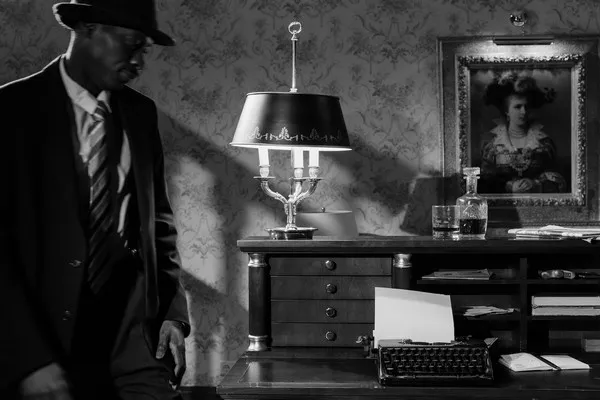Music, a universal language that transcends borders and unites people, has undergone a remarkable transformation throughout history. The question of “how music changed over time” leads us on a mesmerizing journey, witnessing the interplay of culture, technology, and human creativity. From the haunting melodies of ancient civilizations to the electrifying beats of the modern era, this article explores the ever-evolving landscape of music and the forces that have shaped it.
The Roots of Music: Ancient Beginnings
To understand how music changed over time, we must first delve into its ancient origins. Music’s roots can be traced back thousands of years, with evidence of musical instruments and vocalizations dating to prehistoric times. These early forms of music served a wide range of functions, from ritualistic ceremonies to simple communication.
In ancient civilizations like Mesopotamia, Egypt, and Greece, music was an integral part of daily life. It was a means of storytelling, expressing emotions, and connecting with the divine. Instruments like the lyre and the aulos (an ancient Greek double-reeded instrument) were used to create aural tapestries that transported listeners to another world. The complexity and sophistication of these early musical traditions laid the groundwork for what was to come in the centuries that followed.
Medieval and Renaissance: The Age of Polyphony
As we continue to explore how music changed over time, the medieval and Renaissance periods offer a significant shift in musical evolution. During the Middle Ages, monophonic chanting in the Gregorian tradition dominated religious music. However, the Renaissance marked a turning point with the emergence of polyphony, a style characterized by multiple independent melodies harmonizing together.
Polyphonic compositions, such as those by composers like Guillaume de Machaut and Josquin des Prez, introduced intricate harmonies and counterpoint. This development not only expanded the musical landscape but also laid the foundation for Western classical music. The evolution of notation also played a crucial role in preserving and disseminating these complex compositions.
The Baroque Era: Ornate and Expressive
Moving forward in our exploration of how music changed over time, we arrive at the Baroque era. The Baroque period, spanning roughly from the early 17th to the mid-18th century, was characterized by ornate, expressive music that reflected the grandeur of the time. Composers like Johann Sebastian Bach, George Frideric Handel, and Antonio Vivaldi created masterpieces that showcased virtuosic instrumental and vocal techniques.
Baroque music featured intricate melodies, elaborate ornamentation, and a strong emphasis on emotional expression. Innovations in instrument design, such as the creation of the piano, harpsichord, and violin, allowed for greater musical versatility. The development of opera as a distinct form of musical drama also marked a significant evolution in the use of music to convey narrative and emotion.
Classical and Romantic Periods: Structure and Emotion
The classical period, from the mid-18th to the early 19th century, brought about a shift towards greater structural clarity and balance in music. Composers like Wolfgang Amadeus Mozart, Ludwig van Beethoven, and Franz Joseph Haydn emphasized symmetry, clear phrasing, and the use of well-defined forms like sonata-allegro.
In parallel, the Romantic era, roughly spanning the 19th century, championed emotional expression and individualism in music. Composers such as Ludwig van Beethoven (who bridged both eras), Franz Schubert, and Pyotr Ilyich Tchaikovsky pushed the boundaries of orchestration, creating sweeping and emotionally charged compositions. The rise of the piano as a solo instrument allowed for personal and intimate musical expression.
The Birth of Recording Technology
As we continue our exploration of how music changed over time, we arrive at a turning point—the birth of recording technology. The late 19th century brought the invention of the phonograph by Thomas Edison and the gramophone by Emile Berliner. These breakthroughs allowed for the preservation and mass distribution of music.
Recordings revolutionized the way people experienced music. For the first time, one could listen to their favorite performances at will, without relying on live concerts or sheet music. This technological leap made music more accessible, bridging geographical and cultural gaps. It also marked the beginning of the music industry as we know it, with record labels and artists competing for commercial success.
Jazz and the Roaring Twenties: A Musical Revolution
The 20th century witnessed a series of seismic shifts in music, each leaving a profound mark on the ever-evolving landscape. Jazz, born in the early 20th century, was one of these transformative genres. Emerging from African American communities,jazz blended elements of blues, ragtime, and other musical traditions to create a unique and improvisational style.
The Roaring Twenties, a period of social and cultural upheaval, provided the perfect backdrop for the rise of jazz. Artists like Louis Armstrong and Duke Ellington became iconic figures, and jazz clubs were vibrant centers of creativity and cultural exchange. This genre not only transformed music but also played a role in breaking down racial barriers, setting the stage for future civil rights movements.
Rock ‘n’ Roll and the Youth Revolution
The 1950s brought about another musical revolution with the advent of rock ‘n’ roll. Artists like Elvis Presley, Little Richard, and Chuck Berry injected a new energy into music, blending elements of rhythm and blues with a rebellious attitude. This genre was a cultural touchstone for the emerging youth culture, challenging societal norms and ushering in a new era of individualism and self-expression.
Rock ‘n’ roll was not just about the music; it was also a fashion, a lifestyle, and a statement of rebellion. It marked a significant departure from the norms of the time and influenced countless musicians and genres that followed. This era demonstrates how music can serve as a powerful catalyst for social change.
The British Invasion and the Globalization of Pop
The 1960s saw the British Invasion, a phenomenon where British rock bands like The Beatles, The Rolling Stones, and The Who became international sensations. This period marked the globalization of popular music, as British bands crossed the Atlantic to capture the hearts of American audiences.
The British Invasion had a profound impact on popular music, introducing new sounds and styles that blended rock, pop, and psychedelia. The Beatles, in particular, experimented with studio recording techniques, pushing the boundaries of what could be achieved in the studio. This period exemplifies how music can transcend borders, cultures, and languages to become a unifying force on a global scale.
The Electronic Revolution: Synthesizers and Dance Music
The late 20th century witnessed the electronic revolution, as synthesizers and digital technology transformed the way music was created and produced. Innovations like the Moog synthesizer and the advent of MIDI (Musical Instrument Digital Interface) allowed for the creation of entirely new sounds and genres.
Electronic dance music (EDM) emerged as a powerful force during this era. Artists like Kraftwerk, Daft Punk, and The Prodigy used synthesizers and drum machines to create infectious rhythms and otherworldly sonic landscapes. EDM’s influence extended beyond the music itself, shaping contemporary youth culture and the festival scene.
Hip-Hop and Rap: A Cultural Phenomenon
Hip-hop and rap, which emerged in the 1970s in New York City’s Bronx borough, have become a global cultural phenomenon. This genre fuses music, poetry, and social commentary, addressing issues of race, identity, and urban life. Hip-hop artists like Grandmaster Flash, Run-D.M.C., and Public Enemy used rhymes and beats to convey powerful messages.
Hip-hop culture includes not only music but also elements like breakdancing, graffiti art, and fashion. It has transcended boundaries and given a voice to marginalized communities, showing that music can be a tool for empowerment and social change.
The Digital Age: Streaming and DIY Music
The 21st century brought about a digital revolution that has profoundly altered how music is created, distributed, and consumed. The rise of the internet and digital technology has given rise to streaming platforms like Spotify and Apple Music, which have transformed the music industry.
Artists can now produce and release music independently, bypassing the need for traditional record labels. This democratization of music has allowed for a more diverse and eclectic range of sounds, as artists experiment with new genres and production techniques. It demonstrates how technology can empower musicians to take control of their careers and reach global audiences.
Conclusion: Music’s Endless Evolution
In our exploration of how music changed over time, we have traveled through centuries of cultural shifts, technological innovations, and artistic revolutions. From the haunting melodies of ancient civilizations to the digital landscape of the 21st century, music has continuously adapted and transformed, reflecting the ever-changing world around it.
Music is a testament to the human capacity for creativity and expression. It has served as a medium for storytelling, a tool for social and political change, and a universal language that transcends borders. As we look to the future, we can only imagine the new musical landscapes that will emerge, driven by the same forces of culture, technology, and human imagination that have shaped it for millennia.
So, the next time you listen to your favorite song, take a moment to appreciate the rich tapestry of history that has woven together to create the music of today. As we’ve seen, the journey of how music changed over time is a testament to the power of human creativity and the enduring legacy of this universal language.

























